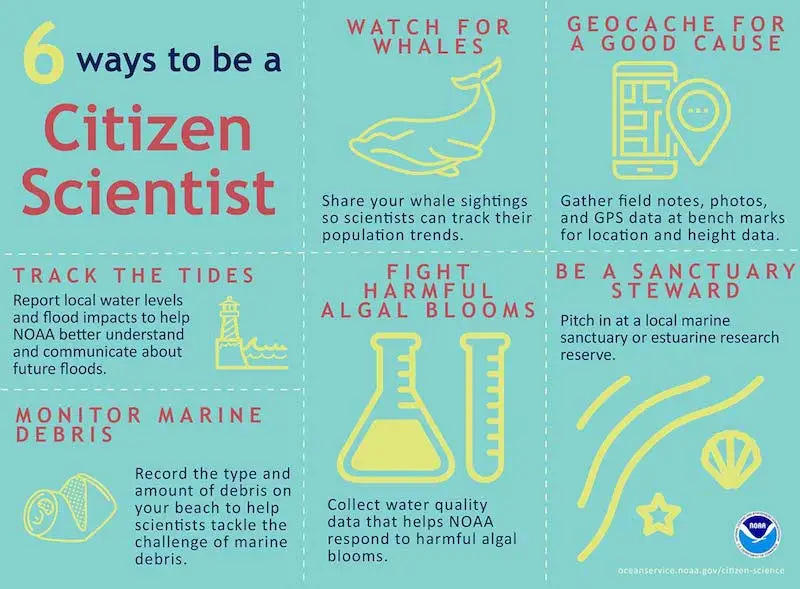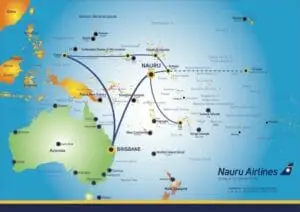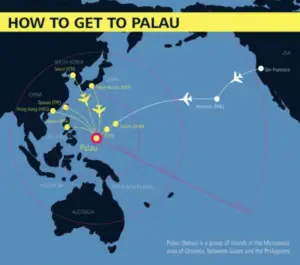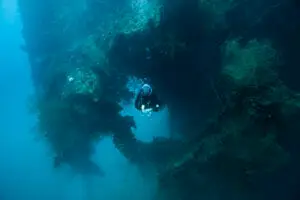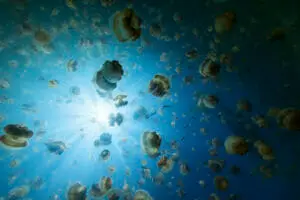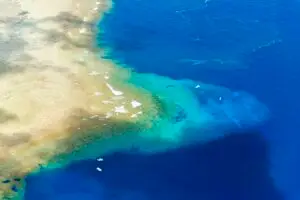We spoke to Citizen Science advocate Dawn Bailey to find out what’s happening in the world and how ordinary people like you and me are helping to change it, one observation or photo at a time.
What is Citizen Science?
Sure, you might not be a scientist. But Citizen Science is the real deal.
The term comes from the growing popularity of programs where anyone can actively contribute to the data used by the scientific community.
It needs to be done properly, of course. As a ‘citizen scientist,’ the best practice is to operate in collaboration with a professional scientist or institution.
Science has standards, and if the data you contribute is to be seen as credible and useful, it needs to be subjected to the rigors of scientific methods.
Who are Citizen Scientists?
They’re the curious people, the ones who aren’t content with simply taking a look at the scenery as they travel, but who want to really ‘see’. They want to take note of what is happening in an environment, and why. They want to investigate, probe, question and speculate, and they’re keen to learn how to do that in a way where their findings can be useful to the broader community.
The collaboration and guidance from scientists can be from something as simple as an:
- Instructional pamphlet
- An app showing a process
- A game with increasing levels of complexity, or a full-blown certification course.
Often, the citizen scientists we work with have a strong intellect and bring their accumulated knowledge, tools and resources to the task.
Volunteers come from diverse backgrounds; for instance, an engineer will bring a specific skill set for measurement and precision.
As a classic example, think of the Birder – those bird-watching enthusiasts, who between them built records dating from the 1600s, and whose meticulous observations are credited with the discovery of migration patterns, habitat loss, disease occurrence, and historic weather patterns.
One citizen scientist lives and works on the Great Barrier Reef – her love for her marine environment led her to develop data collection skills.
Not only does she contribute to local citizen science data collection programs, but her vibrant people skills and passion for the subject sees her evangelizing every tourist who stops long enough for a chat (and there are hundreds each day in her workplace!).
Another citizen scientist is a retired farmer who has worked with animals all his life and wants to continue to contribute to his country’s knowledge while he enjoys traveling around the country in his van.
And then there’s the mum of two small children, who for the past year has been trapping and uploading photos of mosquitoes to help researchers in that field identify species and monitor the spread of mosquito-borne diseases.
In marine ecology, SCUBA divers are the ultimate citizen scientists.
They have put in the time and effort to obtain a difficult, out of the ordinary certification, and invest in a costly set of equipment.
They’re committed to their adventure and often look for ways to take it to the next level.
During training, scuba divers are educated in concepts of physics, chemistry, and physiology, perhaps being inclined to participate in research activities that cover these and similar topics.
Surveys done within the global SCUBA diving community show that scuba divers are highly concerned with and informed about urgent marine topics, such as:
- Declining shark populations
- Turtle protection programs
- Whale ecology
- Large animal migration and conservation
- Invasive species
- Global climate change which effected JellyFish lake in Palau too.
It’s becoming increasingly common for dive clubs to want to contribute to conservation efforts, to give back, and to make a difference in the field of marine science.
Why are Citizen Scientists so useful? Don’t we have “real scientists” to do the work?
We do but think of it as crowd-sourced data collection.
Imagine, for instance, wanting to find out the annual rainfall of the USA – an enormous spatial scale, and the seasons providing temporal scale would mean hundreds of people need to be deployed across the USA for an entire year.
For a bunch of scientists used to working in their labs, that would be stretching resources just a little.
Assign the tasks to willing participants across the nation, however, and it could yield thousands of data points on a single day. A consistent approach would make it easy to gather enough data to address the question of annual rainfall.
It’s not a new approach, of course.
In the early 1800s President Thomas Jefferson collected weather observations and planned to create a network so each county in Virginia could provide twice-daily observations of temperature and wind direction.
How do Citizen Scientists help?
In many ways, including:
- Monitoring wildlife and the environment
- Taking photos and classifying images
- Collecting physical samples
- Deploying or recovering equipment
and even / further
- Participating in the experimental design process
- Analyzing data
- Getting the results to resource management agencies
What is the value of Citizen Science?
People are generally expensive to employ.
So, the ‘crowd-sourced’ approach allows previously unimaginable amounts of data collection across impossible geographic scales and helps fill information gaps while keeping those operating expenses down. It also brings a new perspective to the subject.
Okay. So what’s in it for the Citizen Scientists?
Our citizen scientists report loads of benefits, including:
- Increased knowledge, science literacy, and improved skills. Many find they start applying scientific thinking to their everyday lives.
- A sense of ownership and connection to the environment, leading to stewardship and a feeling of fulfillment.
- Strong social bonds and community involvement
- Increased well-being in terms of better physical and mental health
And for the planet?
“People protect what they love.” ~ Jacques Yves Cousteau
First-hand experiences create unforgettable moments that help us learn about our surroundings while making a lasting impression. We have found that people need to develop a personal association with nature in order to truly care about it.
People who get involved start to better understand and interpret the cause-and-effect of issues such as climate change, ocean acidification, and plastic pollution, without preaching specific agendas.
In the marine environment, the Citizen Science initiatives create a sense of ownership and connection to the reefs – whether coral or temperate – and kelp forests.
Citizen Science initiatives also play a vital role in promoting the acceptance of and compliance with environmental management decisions. This is very important in terms of fisheries and management concerning the marine protected areas.
In fact, it’s been so crucial that the US government created the Crowdsourcing and Citizen Science Act in 2017.
This paved the way for government-supported partnerships, and the government created an official website designed to accelerate the government’s use of Citizen Science.
How can we get involved?
Check out one of the many projects registered with the larger citizen science organizations listed below.
- www.scistarter.org
- www.zooniverse.org
- www.inaturalist.org
- www.citizenscience.org
- www.citizenscience.gov
- www.citizensciencealliance.org
- www.nationalgeographic.org/encyclopedia/citizen-science
- www.scientificamerican.com/citizen-science
Ocean Specific
Try searching for “Bioblitz” + your city in a google search and see just how many other curious people are interested in recording their critter sightings.
The App Store on your smartphone will offer a plethora of choices for citizen science apps ranging from games and outdoor engagement (think Pokemon) to data recording and real-time projects.
A good start is iNaturalist and related apps.
Most citizen science project or conservation groups have a Facebook page.
A quick search of your preferred pastime, like photography, will reveal groups you may not have known about. Same thing with a favorite critter, hike, bike path, or park.
Another way to discover projects happening in your area is to check out MeetUp groups in your local area; search for topics relative to your hobbies or interests.
Often the local natural history museum will have events that engage the public, provide a learning experience and even provide an outdoor adventure.
Local aquariums typically have public engagement projects that bring the sea to you and introduce ways to get involved with projects on the coast.
Get your feet wet with Marine Citizen Science by logging on to the NOAA website and checking out 6 different volunteer programs they offer throughout the US.
If you need any advice of help planning your Palau vacation, please do not hesitate to contact our US reservations team directly via e-mail.

